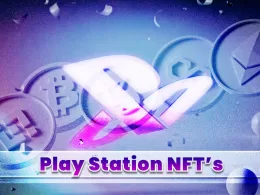In 2023, the NFT market experienced a sharp surge in trading volume, only to be followed by a decline in the later months. A whopping ~ 1.71 million NFTs were sold amounting to a staggering ~ $3.5 billion. Blur’s incentives and airdrop largely influenced this roller-coaster trend. Despite a decrease in the number of active NFT traders, the overall number of holders grew by ~ 12.62%, reaching around ~ 4.3 million, suggesting a resilient interest and potential long-term confidence in the NFT space.
This blog navigates through the peaks and valleys of this dynamic ecosystem, unraveling the nuanced trends, triumphs, and transformative moments that left an indelible mark on the industry.
Key Statistics
- Monthly Volume
Volumes in the NFT market peaked in early 2022 but subsequently declined significantly. The first half of 2023 witnessed recovery from this decline with volumes reaching ~ $1.83 billion in March, one of the reasons for this was the launch of Blur’s token airdrop campaign. However, it started to decline in the second half of 2023 and proved to be a tough time for the NFT ecosystem as trading activity on major marketplaces fell by more than 70%, plummeting floor prices for major blue chip NFTs.
- Market Share by Chain
Ethereum maintained its prominent position in the NFT market, commanding a significant share of ~ 61.8% in terms of number of projects launched. Chains like Polygon, BNB Chain, and Solana emerged, albeit with lesser market shares.
- Marketplace Competition
Blur surpassed leading players like OpenSea and LooksRare owing to their zero fee policy and took the lead in trading volume in 2023, commanding a ~ 72.9% of the market share with a ~ $640.7 million trading volume. LooksRare had a trading volume of ~ $119.2 million with a share of 13.6%, while OpenSea witnessed a decline with a mere ~ $77 million in trading volume and a ~ 8.8% market share (including OpenSea Pro) in 2023.
Trends
NFTs transcended digital images, expanding into diverse sectors including music, fashion, gaming, luxury goods, metaverse, supply chain, ticket sales, asset tokens, identity and credentials, as well as loans and financial instruments.
All this development in the NFT infrastructure has allowed implementation of interoperability among different platforms, systems, and games, with NFTs playing a pivotal role. For instance, the emergence of Wrapped CryptoPunks and Kitties, the establishment of cross-chain bridges, and the implementation of interoperable standards.
NFTs started to bridge the gap between the physical and digital realms. For instance, Glenfiddich Rare Whisky, Nike CryptoKicks, and VeeFriends showcased a trend where tangible assets were tokenized into digital representations, thereby establishing a link between real-world items and their virtual counterparts through blockchain-based NFTs.
Expert Opinion
Jimi Ibrahim, Co-Founder, OasisX
Key trends included increased integration of NFTs into mainstream digital platforms, growing emphasis on utility-driven NFTs, and a heightened focus on community and social engagement features.
Future Outlook
The year 2024 holds significant promise for NFTs, marking a pivotal phase in their evolution and application. With the introduction of newer standards like ERC-998 and EIP-2309, the potential for NFTs to become more versatile and cost-effective has expanded. ERC-998’s “composable” NFTs allow characters in virtual realms to own separate equipment or land as individual NFTs, while EIP-2309 proposes minting numerous NFTs in a single transaction, potentially slashing gas costs.
The emerging use cases of NFTs, particularly utility-based ones representing digital assets like virtual real estate and personal identity, indicate a broader spectrum of applications beyond mere collectibles. As traditional industries show interest, exemplified by Amazon’s rumored NFT Marketplace and the success of NBA Top Shot, NFTs are poised to transcend niche spaces and gain mainstream traction.
BAYC’s strategic moves to venture into virtual reality, host events, and blockchain gaming underscore the dynamic potential for NFTs in diversifying experiences and engaging communities.
The shift towards utility-based NFTs, coupled with the integration into various sectors like gaming and decentralized finance, signifies a maturation phase for the NFT market, fueling optimism for sustained growth and innovation in the upcoming year.
Crypto Outlook 2024
2023 was a roller-coaster ride for the crypto sphere, marked by dynamic shifts, innovative advancements, and transformative trends that reshaped the industry’s landscape. Our Crypto Outlook Report for 2024 reflects on the highs, lows, and pivotal moments that defined the past year, while also peering into the horizon to forecast the exciting potential and emerging patterns set to influence the year ahead, with insights from industry leaders at Stepn, Enjin, Hacken, SuperScrypt, and more.
Click here to read the full report!









